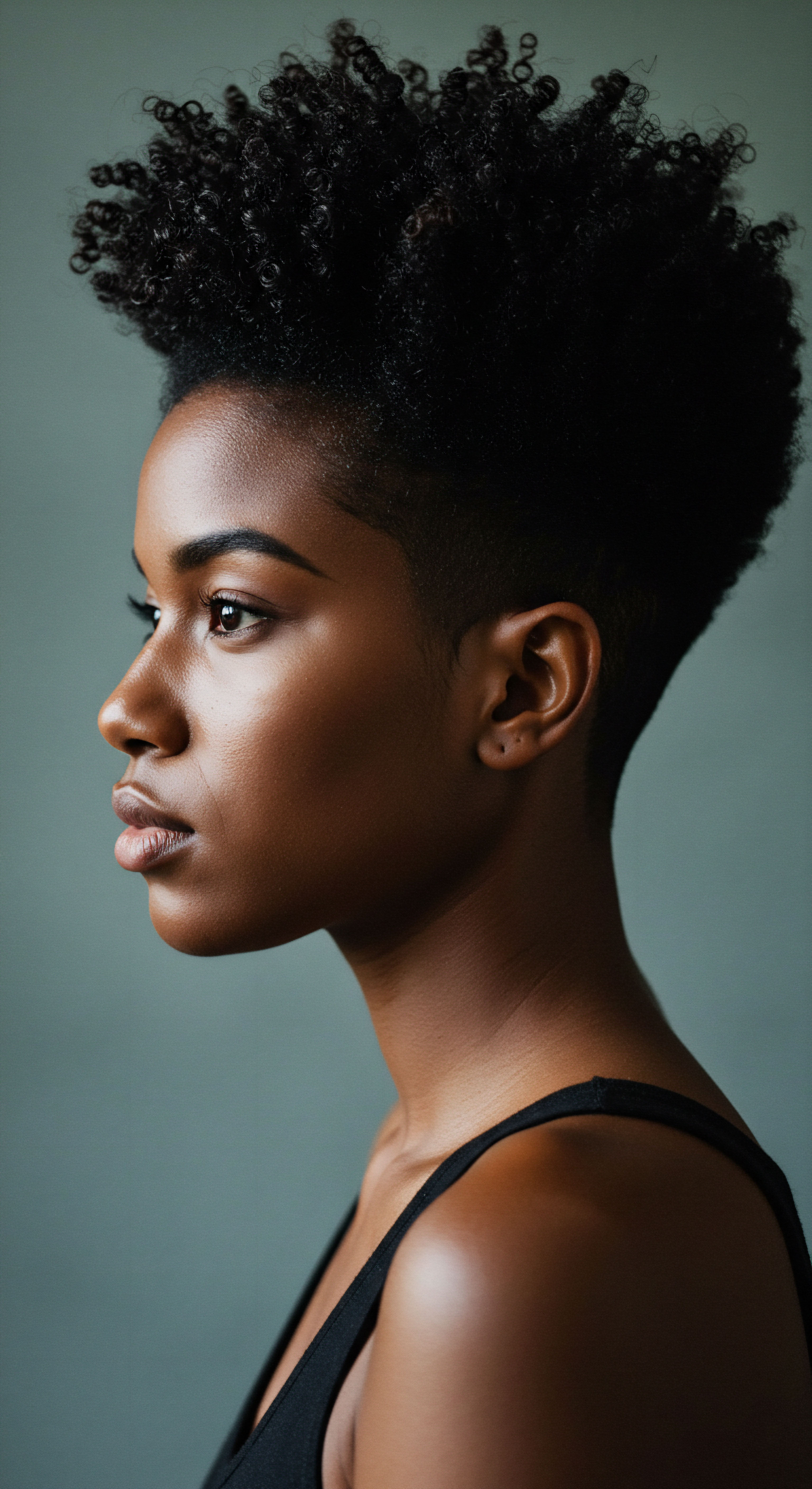
Roots
The quiet murmur of water, a daily presence in our lives, holds more than simple cleansing power. For those with textured hair, a deeper story unfolds with each wash, a subtle yet persistent interaction between water’s hidden elements and the delicate structure of our strands. This ancient dance, often unseen, leaves its mark, influencing the very feel and appearance of our curls, coils, and waves. Understanding this foundational connection, the elemental interplay at the heart of our hair’s journey, begins with acknowledging the invisible forces at play.

Water’s Elemental Guests
Our water, sourced from subterranean aquifers or meandering rivers, often carries with it microscopic passengers ❉ dissolved minerals. These guests, primarily calcium and magnesium, lend water its characteristic “hardness.” They are not inherently malicious, these mineral ions, but their presence introduces a chemical dynamic that can significantly alter the landscape of our hair. The concentration of these mineral ions determines the water’s hardness, a spectrum ranging from the soft, yielding waters of some rain-fed regions to the robust, mineral-rich flows common in areas where water has journeyed through limestone bedrock.
The core of this interaction lies in the fundamental principles of electrical charge. Hair, particularly its outermost layer, the cuticle, carries a slight negative charge. This natural anionic disposition is especially pronounced when hair is exposed to water, as the water molecules themselves can influence the protein structure. Meanwhile, the mineral ions in hard water, specifically calcium (Ca²⁺) and magnesium (Mg²⁺), are cations, meaning they possess a positive charge.
The universe, in its elegant simplicity, dictates that opposites attract. This electrostatic pull is the primary force drawing these mineral guests to our hair fibers, a silent, molecular embrace occurring with every wash.
The unseen mineral guests in hard water, primarily calcium and magnesium, carry a positive charge, drawing them towards the naturally negatively charged surface of hair strands.

The Hair’s Intricate Outer Layer
To truly appreciate how hard water minerals bind to hair, one must consider the hair’s outer architecture. The cuticle, a series of overlapping scales much like shingles on a roof, forms the hair’s primary protective shield. In its healthy, undisturbed state, these scales lie flat, creating a smooth surface that reflects light and helps retain moisture. However, this protective layer is also the first point of contact for external elements, including the minerals found in water.
The surface of these cuticle cells, particularly when hair is wet or has experienced any form of compromise, presents sites that are amenable to binding. The protein keratin, the main constituent of hair, contains various amino acid residues with functional groups capable of carrying an electrical charge. Among these, carboxylate and sulfonate groups are particularly relevant.
When deprotonated, these groups become negatively charged, creating abundant docking points for the positively charged mineral ions. This molecular handshake, while seemingly benign, sets the stage for a series of events that can alter the hair’s texture and overall vitality.
Consider the impact of water’s pH on this interaction. The pH scale measures acidity or alkalinity, and hair thrives in a slightly acidic environment, typically between pH 4.5 and 5.5. Hard water, often leaning towards the alkaline side, can cause the hair cuticle to swell and lift.
This opening of the cuticle scales exposes more of those negatively charged binding sites within the hair shaft, making it even more susceptible to mineral adhesion. A higher pH water essentially lays out a wider welcome mat for mineral deposition, intensifying the bond between the hair and its unwanted guests.
- Calcium Ions ❉ These divalent cations (Ca²⁺) are a primary component of hard water and readily interact with the negatively charged sites on hair proteins, leading to a film-like residue.
- Magnesium Ions ❉ Also divalent cations (Mg²⁺), magnesium binds to hair similarly to calcium, contributing to the overall mineral buildup and altering hair’s tactile qualities.
- Hair’s Negative Charge ❉ The keratin protein, especially its cuticle, carries anionic sites that act as magnets for the positively charged mineral ions present in hard water.

What Constitutes Hard Water
The definition of “hard water” itself is not universally fixed, yet it consistently points to the presence of dissolved mineral salts. The United States Geological Survey (USGS) offers a widely referenced classification system, providing a framework to understand water’s mineral load. This classification helps us categorize water from “soft” to “very hard,” based on the concentration of calcium carbonate or its equivalent.
It is important to remember that these classifications are guidelines, and local water conditions can vary significantly. A region with water flowing through extensive gypsum or limestone deposits will naturally experience higher levels of calcium and magnesium, contributing to its hardness. This geological heritage directly influences the daily experience of hair care for countless individuals, particularly those whose hair is already predisposed to dryness or structural nuances.
| Classification Soft |
| Calcium Carbonate (ppm or Mg/L) 0-60 |
| Classification Moderately Hard |
| Calcium Carbonate (ppm or Mg/L) 61-120 |
| Classification Hard |
| Calcium Carbonate (ppm or Mg/L) 121-180 |
| Classification Very Hard |
| Calcium Carbonate (ppm or Mg/L) 180 |
| Classification These values provide a general understanding of water hardness levels. |

Ritual
Our daily hair care practices, the rituals we perform with thoughtful intent, become a nuanced dance when hard water enters the equation. What might seem like a simple wash transforms into a subtle negotiation with unseen mineral presences, impacting how our strands respond to our gentle efforts. This section peels back the layers of these everyday interactions, revealing how the binding of hard water minerals influences the very efficacy of our care routines and the vitality of our hair.

How Mineral Ions Claim Their Space
The journey of hard water minerals to hair begins with the initial contact during washing. As water flows over the hair, the positively charged calcium and magnesium ions seek out negatively charged sites on the hair’s surface. These sites are abundant on the cuticle, especially if the hair is porous or has been subjected to chemical treatments like coloring, relaxing, or heat styling. Damaged hair, having lost its protective 18-methyleicosanoic acid (18-MEA) layer, presents an even more inviting surface for these mineral cations to adhere.
Once attached, these mineral ions begin to accumulate, forming a microscopic film or coating on the hair shaft. This accumulation is not merely superficial; studies suggest that minerals can also penetrate beneath the surface layers, particularly into damaged areas. This internal deposition, alongside the external coating, contributes to the overall mineral load within the hair fiber, influencing its structural integrity and responsiveness to care. The higher the water’s pH, the more receptive the hair becomes to this mineral absorption, as the hair’s own negatively charged sites become more available for binding.
Hard water minerals, drawn by opposing electrical charges, adhere to the hair’s surface and can penetrate its inner structure, particularly if the hair is damaged or exposed to alkaline water.
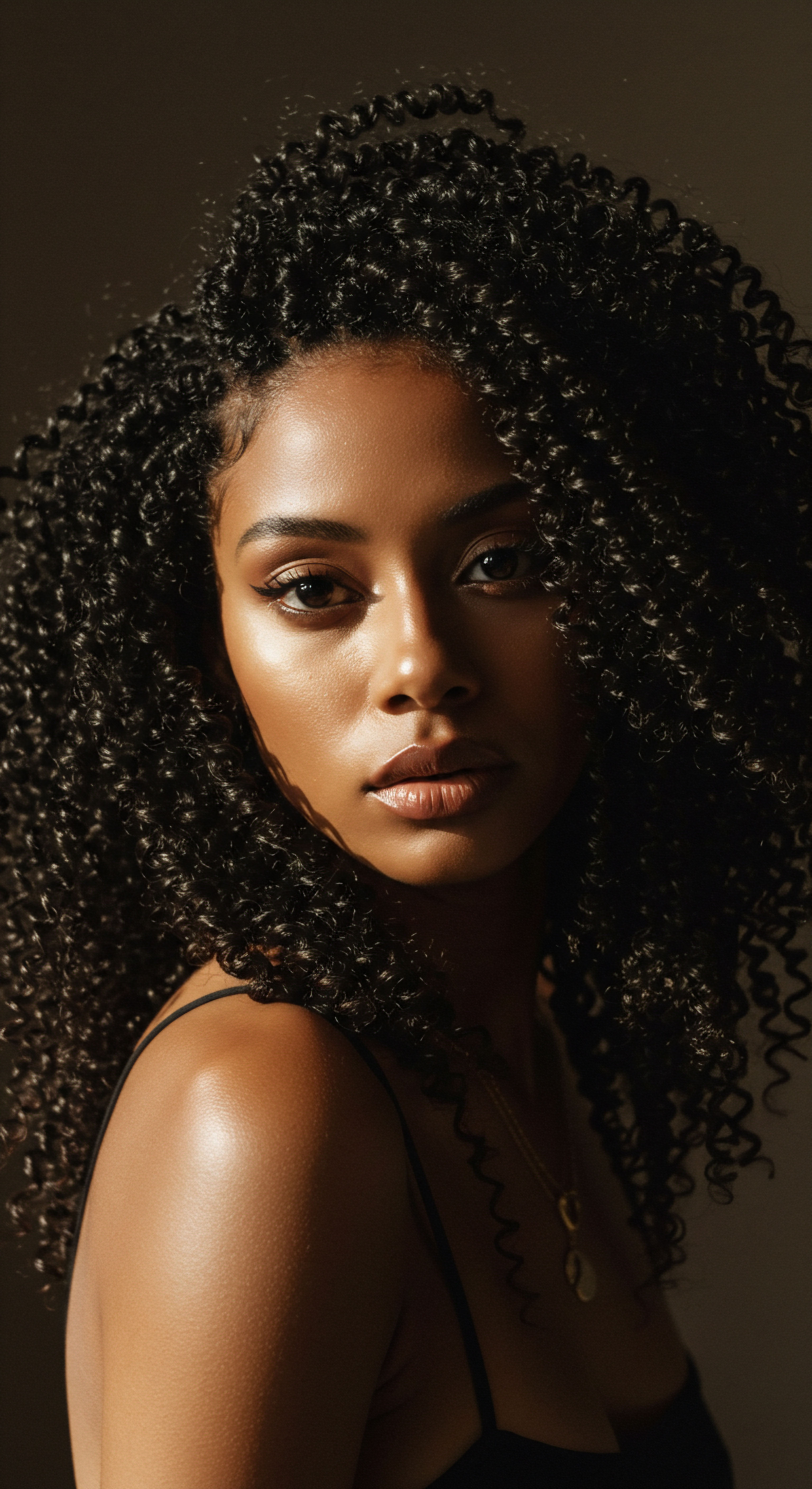
The Impact on Hair’s Feel and Form
The consequences of this mineral binding are often felt before they are seen. Hair may begin to feel rough, stiff, or less pliable. This rigidity can reduce the hair’s natural elasticity, making it more prone to tangles and breakage during styling or even simple manipulation. For textured hair, where natural curl patterns rely on flexibility and moisture, this stiffness can disrupt the delicate curl formation, leading to a loss of definition and increased frizz.
The mineral coating also interferes with the hair’s ability to absorb moisture and nutrients from conditioners and styling products. It creates a barrier, preventing beneficial ingredients from reaching the hair shaft effectively. This diminished product performance means that even the most thoughtfully chosen conditioners or moisturizing creams may seem to fall short, leaving hair feeling perpetually dry and lackluster. The natural shine, a hallmark of healthy hair, can become obscured by the dulling film of mineral deposits.
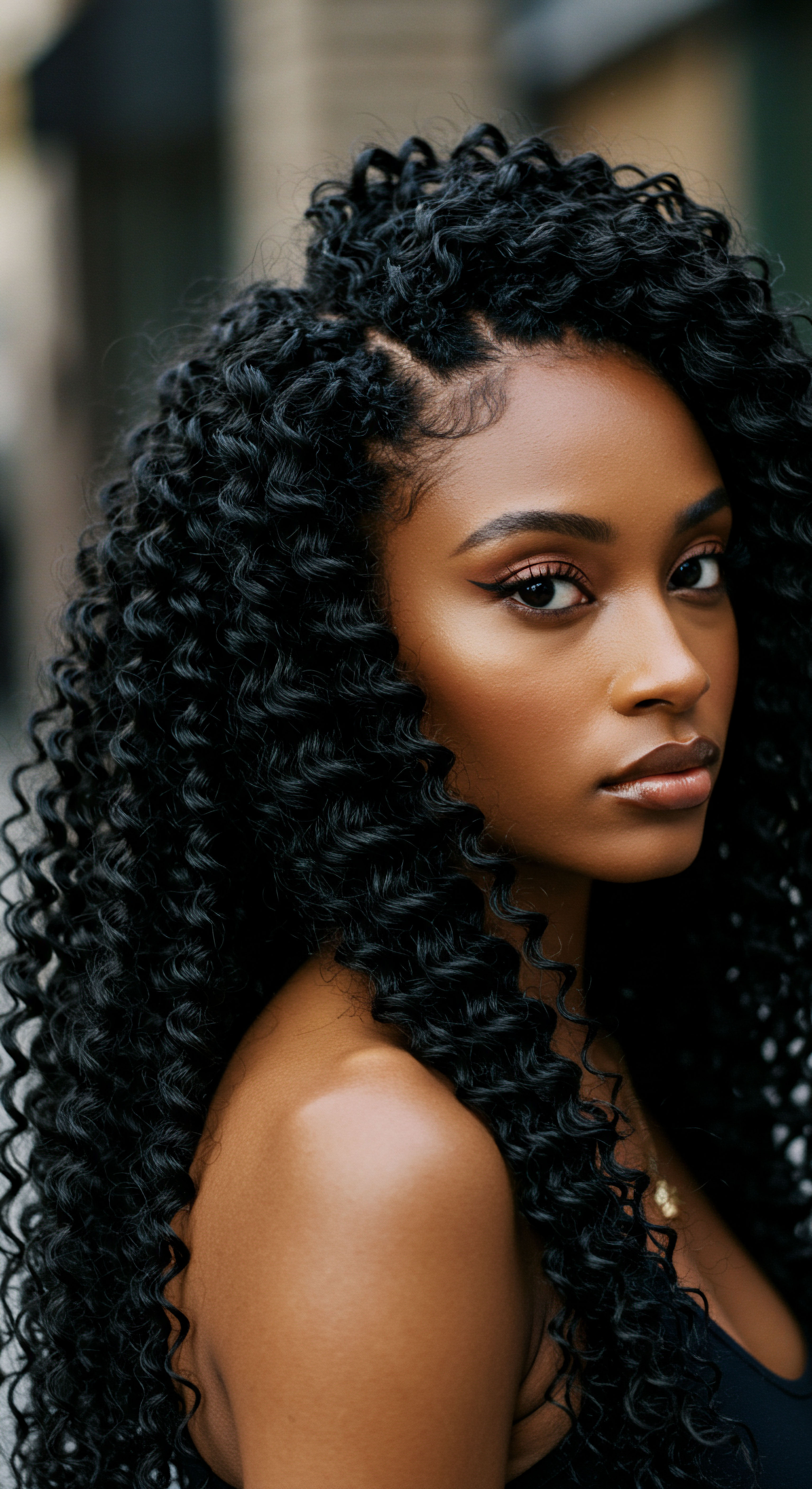
Do All Minerals Bind Equally?
While calcium and magnesium are the primary culprits in hard water, their binding affinities and visible effects can differ. Research provides a fascinating, sometimes surprising, look into these distinctions. For instance, a study by Kaliyadan et al. in 2017, examining hair samples treated with hard and soft water, found no statistically significant difference in calcium deposition on the hair surface (P = 0.28).
However, the same study revealed a significant difference in magnesium deposition (P = 0.001), with higher levels observed in samples washed with hard water. This suggests that while both minerals contribute to the overall burden, magnesium may adhere more readily or in greater quantities to the hair’s exterior, potentially influencing its tactile qualities more profoundly. This nuanced finding reminds us that the narrative of hard water’s influence is not a monolithic one, but a complex interplay of chemical specificities.
This subtle distinction, while perhaps not immediately obvious to the touch, holds significance for those formulating hair care solutions or for individuals seeking to truly understand their hair’s response to their water environment. It highlights that the mineral cocktail in our water is not uniform in its impact, inviting a more precise approach to mitigating its effects.
The presence of these minerals can also interact with other elements. For those with color-treated hair, mineral deposits can accelerate color fading and even cause discoloration, particularly brassy or greenish hues in lighter hair. This occurs because certain minerals, like copper (which can leach from pipes), can participate in chemical reactions with hair dyes, or the mineral film itself can prevent dye pigments from adhering properly.
- Reduced Lather ❉ Hard water minerals interact with the cleansing agents in shampoos, hindering their ability to form a rich lather and effectively clean the hair and scalp.
- Product Ineffectiveness ❉ A mineral coating on the hair creates a barrier, diminishing the ability of conditioners, masks, and styling products to penetrate and deliver their intended benefits.
- Increased Friction ❉ Mineral deposits can roughen the hair’s surface, leading to increased friction between strands, which in turn contributes to tangling and mechanical damage.

Relay
Beyond the immediate tactile sensations and visible changes, the story of hard water and hair extends into a deeper realm of scientific complexity and cultural adaptation. How do these mineral bonds truly alter the hair’s intrinsic architecture, and what historical wisdom or modern scientific solutions have arisen from this persistent challenge? This section seeks to connect the microscopic chemical interactions with the broader tapestry of hair health, drawing upon research and insights that transcend superficial explanations.

The Molecular Adhesion Mechanism
The binding of hard water minerals to hair is fundamentally an electrostatic phenomenon, but its ramifications extend to the very protein structure of the hair fiber. Hair is composed primarily of keratin, a complex protein rich in cysteine, an amino acid containing sulfur. These cysteine residues form disulfide bonds, which are critical for the hair’s strength and shape. However, keratin also contains other functional groups, such as carboxyl groups (–COOH) and amino groups (–NH₂), which can become ionized depending on the surrounding pH.
In water with a pH above hair’s natural slightly acidic range (typically pH 4.5-5.5), the carboxyl groups on the keratin protein deprotonate, becoming negatively charged carboxylate ions (–COO⁻). Simultaneously, the amino groups may remain protonated or become deprotonated, contributing to the overall charge profile. It is these newly available, negatively charged sites that act as prime anchors for the positively charged divalent mineral ions like calcium (Ca²⁺) and magnesium (Mg²⁺). This ionic attraction forms stable bonds, effectively locking the minerals onto and into the hair structure.
Moreover, studies suggest that damaged hair, which has undergone chemical treatments like bleaching or coloring, possesses an even greater number of negatively charged sites. The bleaching process, for example, can cause oxidation of disulfide bonds, creating sulfonic acid and sulfonate groups that further increase the hair’s negative charge, making it a stronger magnet for mineral cations. This explains why chemically treated hair often experiences more pronounced issues with hard water buildup.

What are the Long-Term Structural Consequences?
The accumulation of hard water minerals on and within the hair fiber is not a static condition; it precipitates a cascade of structural and mechanical alterations. Over time, these mineral deposits can physically disrupt the smooth, overlapping cuticle scales, causing them to lift or roughen. This compromised cuticle surface directly impacts the hair’s ability to retain moisture, leading to persistent dryness and a brittle texture. The physical presence of these minerals can also add perceptible weight to the hair, diminishing its natural buoyancy and volume.
Beyond the surface, the internal deposition of minerals can interfere with the hair’s intrinsic flexibility. While some studies, such as one by Srinivasan et al. in 2013, found no statistically significant difference in the tensile strength or elasticity of hair samples treated with hard water versus distilled water over a 30-day period, other research offers a contrasting perspective. A 2018 study on male hair samples, for example, reported a statistically significant reduction in tensile strength for hair exposed to hard water (average 234.16 N/mm²) compared to deionized water (average 254.84 N/mm²).
This disparity in findings underscores the complexity of hair science and the influence of study parameters, such as sample size, duration of exposure, and specific water compositions. The long-term impact on the hair’s ability to withstand stress and manipulation, particularly for textured hair types already prone to breakage, remains a significant consideration.
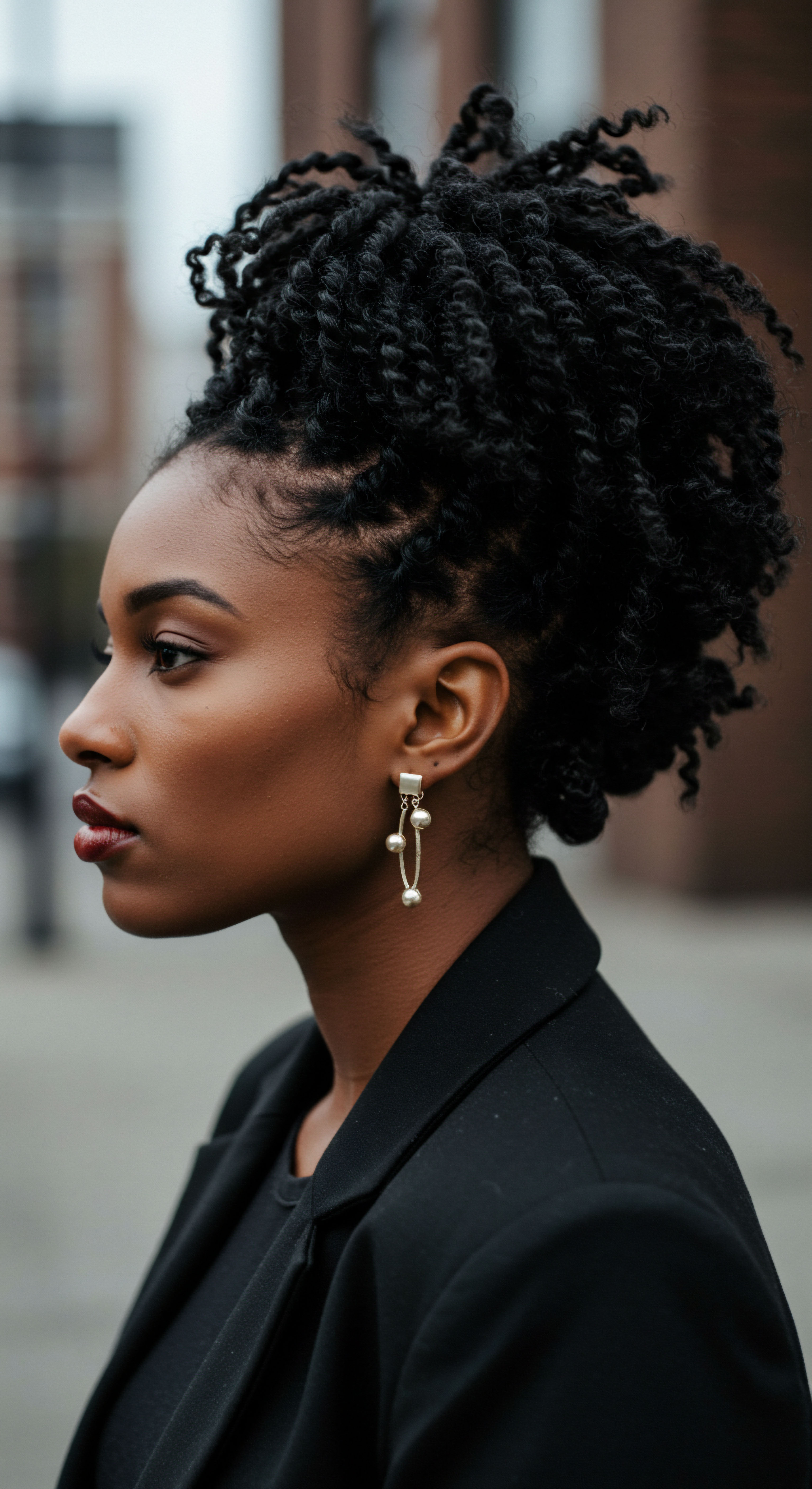
Can Hair Type Influence Mineral Binding?
The unique architecture of textured hair, with its varied curl patterns and often more open cuticle structure, suggests a particular susceptibility to hard water mineral binding. While research on hard water’s specific effects across the full spectrum of textured hair types is still developing, general principles offer insight. Hair with higher porosity, a characteristic often seen in textured hair due to naturally lifted cuticles or damage, provides more accessible sites for mineral adhesion. The very nature of curls and coils, with their many bends and twists, can also create more surface area for mineral deposits to accumulate, leading to a duller appearance and a stiffer feel.
The historical context of hair care traditions in regions with naturally hard water often includes practices aimed at mitigating these effects. For generations, communities have intuitively turned to acidic rinses, such as diluted vinegar or citrus juices, to counter the alkalinity of hard water and help dissolve mineral buildup. These traditional methods, passed down through families, reflect an ancestral understanding of hair chemistry, long before modern scientific explanations were available. Such practices, rooted in lived experience, serve as a testament to the persistent challenge hard water presents and the ingenuity of human adaptation.
Modern solutions, drawing from both traditional wisdom and advanced chemistry, now offer targeted approaches. Chelating agents, for example, are molecules designed to surround and bind with metal ions, effectively removing them from the hair fiber. Ingredients like EDTA (ethylenediaminetetraacetic acid) or citric acid are commonly found in clarifying or “detox” shampoos, working to dislodge the mineral bonds and restore the hair’s natural softness and vibrancy.
- Ionic Bonds ❉ The primary mechanism where positively charged mineral ions cling to negatively charged sites on the hair’s keratin proteins.
- Cuticle Disruption ❉ Mineral accumulation can cause the hair’s protective cuticle scales to lift, leading to increased porosity and moisture loss.
- PH Sensitivity ❉ Higher water pH amplifies mineral binding by increasing the negative charge density on the hair’s surface.

The Unseen Chemical Battle
Beyond the physical attachment, hard water minerals can initiate subtle chemical reactions within the hair. Certain metal ions, particularly copper (which can be present in water or leach from pipes), are known to participate in “metal-induced radical chemistry”. This means they can act as catalysts, generating damaging free radicals when exposed to light or during chemical services like hair coloring. These radicals can lead to oxidative damage to the hair’s proteins and pigments, further compromising its integrity and contributing to issues like color fading or unwanted tonal shifts.
This complex interaction highlights the interconnectedness of water quality, hair chemistry, and styling practices. A seemingly innocuous daily wash can, over time, contribute to a cumulative burden on the hair, especially for those who regularly chemically process their strands. The science behind this phenomenon is still unfolding, with ongoing research seeking to precisely quantify the long-term effects of various mineral concentrations and types on different hair structures. This continued inquiry helps us understand the hidden vulnerabilities of our hair and how to better safeguard its health.
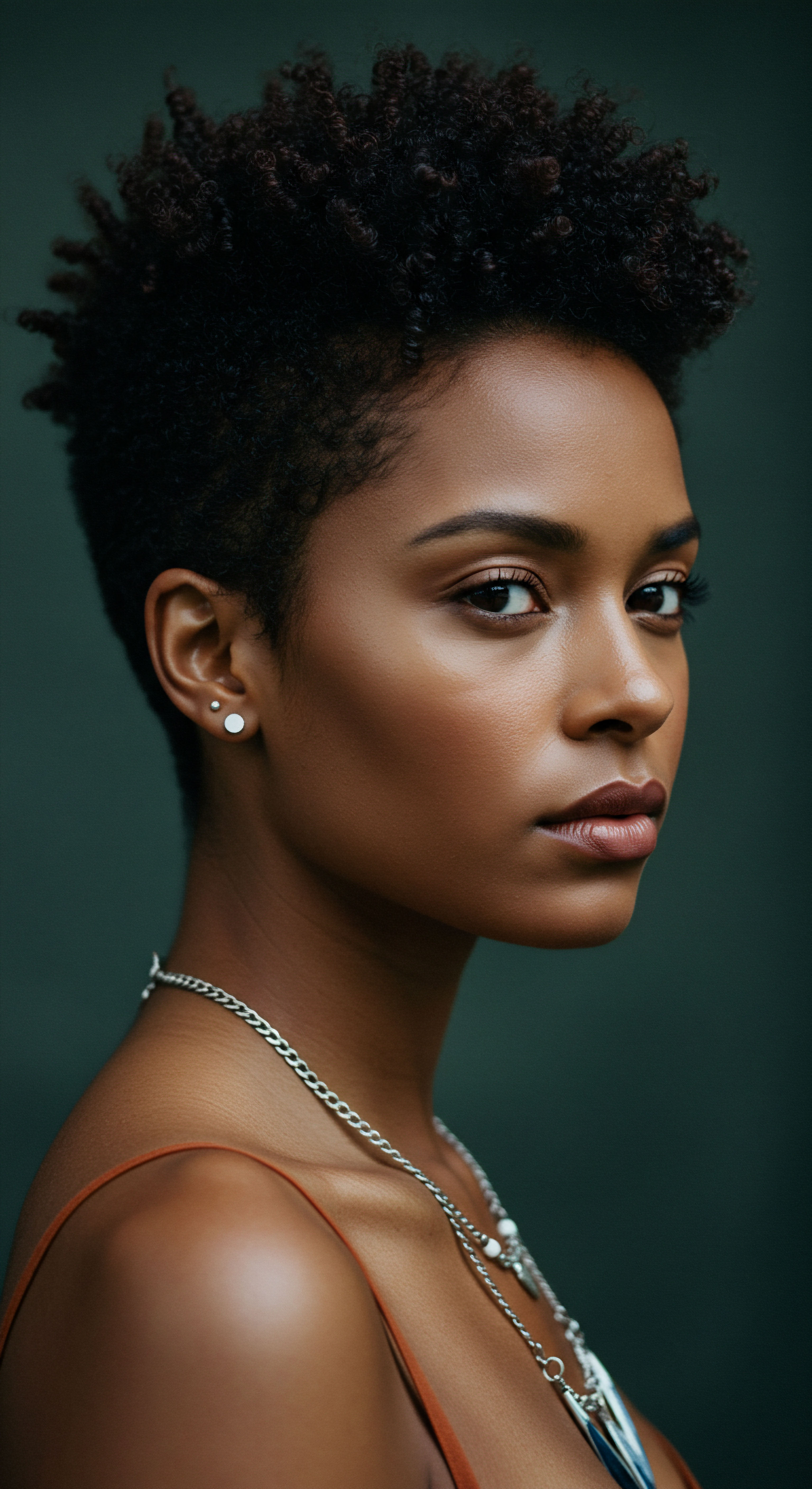
Reflection
The journey through the intricate world of hard water and its dance with our hair leaves us with a profound appreciation for the subtle yet powerful forces at play in our daily lives. From the unseen mineral guests in our water to their intimate embrace with our hair’s protein structure, each interaction shapes the narrative of our strands. Understanding this connection is not simply about identifying a problem; it is an invitation to engage with our hair on a deeper, more informed level.
It encourages us to listen to its whispers of dryness or stiffness, to observe the nuances of its texture, and to approach its care with a gentle, knowing hand. This knowledge empowers us to choose practices and products that truly honor the unique composition of our hair, transforming a routine into a ritual of mindful attention, ensuring our textured crowns can truly flourish.

References
- Halal, John. Hair Structure and Chemistry Simplified. Milady, various editions.
- Kaliyadan, Feroze, et al. “Scanning electron microscopy study of hair shaft changes related to hardness of water.” International Journal of Trichology, vol. 9, no. 3, 2017, pp. 108-111.
- Luqman, Muhammad, et al. “To Evaluate and Compare Changes in Baseline Strength of Hairs after Treating them with Deionized Water and Hard Water and its Role in Hair Breakage.” International Journal of Trichology, vol. 10, no. 3, 2018, pp. 113-116.
- Evans, A.O. Marsh, J.M. Wickett, R.R. “The uptake of water hardness metals by human hair and corresponding article The structural implications of water hardness metal uptake by human hair.” Journal of Cosmetic Science, vol. 62, no. 1, 2011, pp. 25-39.
- Srinivasan, Geetha, et al. “Effects of Hard Water on Hair.” International Journal of Trichology, vol. 5, no. 2, 2013, pp. 69-72.